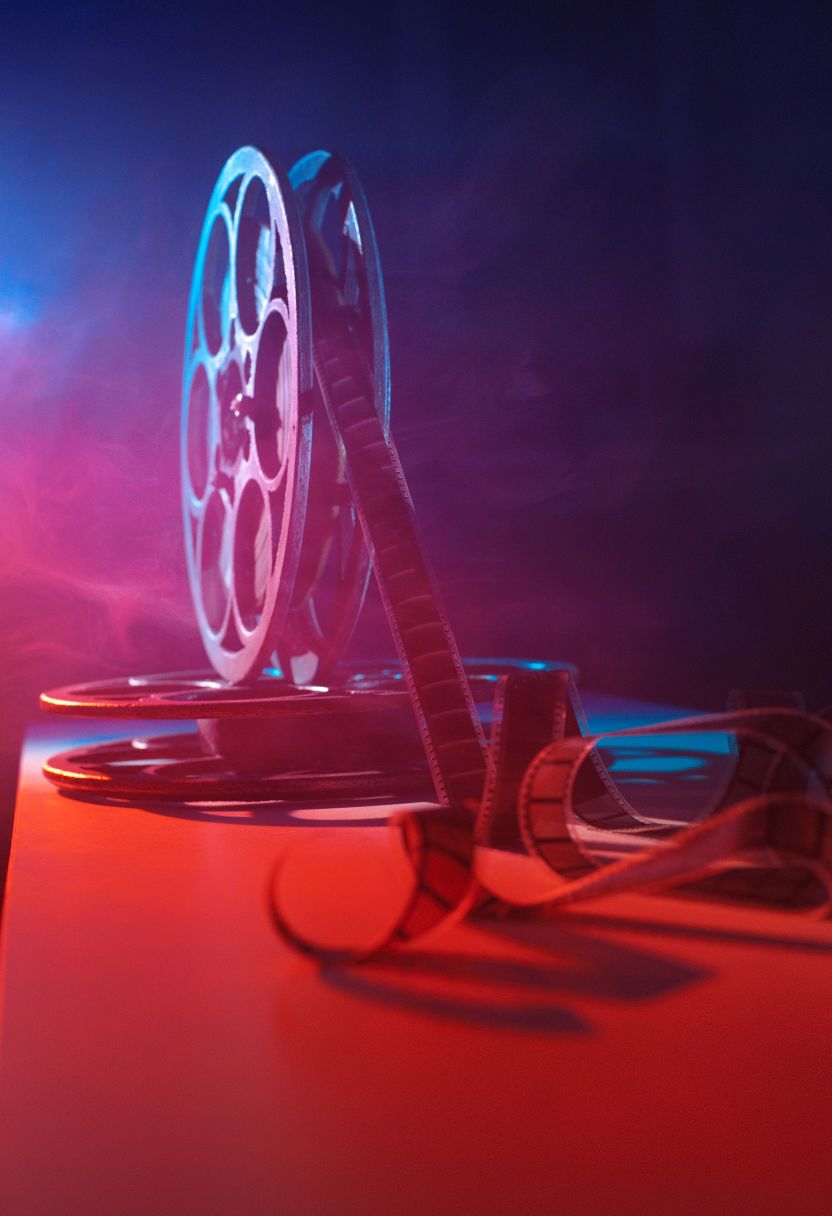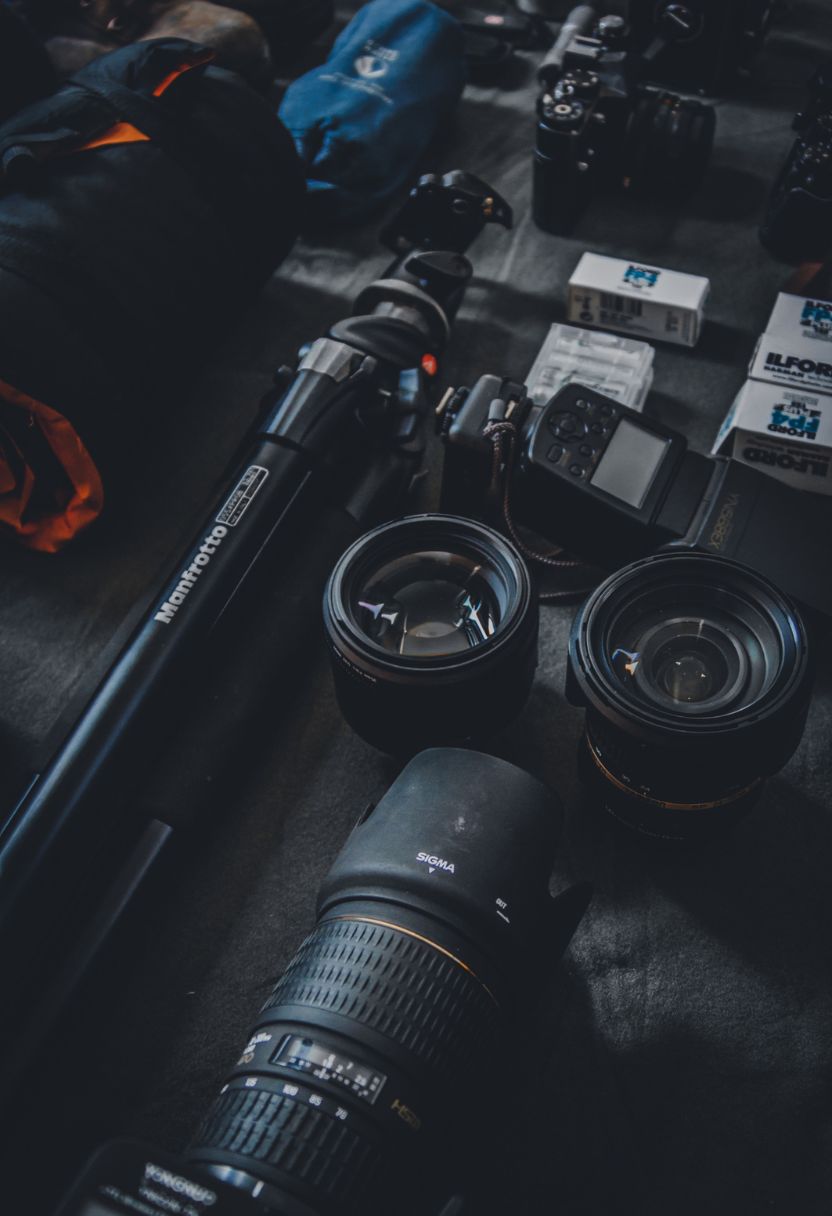

The history and development of instant film is quite a fascinating journey, riddled with innovation, setbacks, and a touch of nostalgia. It all began back in the 1940s when Edwin Land, an American scientist and inventor, founded Polaroid Corporation. He wasn't happy with conventional photography's long wait times – I mean, who wants to wait days or even weeks for their photos? So Land set out to create something that could give people instant gratification.
extra details offered see it. In 1948, Polaroid introduced the first commercial instant camera called the Model 95. The magic behind this technology was a special type of film that developed itself within minutes after being exposed to light. You'd snap your photo, pull it out from the camera and voila! In under a minute or two, you'd have a tangible photograph right in your hands. People were absolutely thrilled by this innovation - can you blame 'em?
Throughout the 1960s and ‘70s, instant film saw significant advancements. Polaroid released more sophisticated cameras like the SX-70 in 1972 which folded neatly into a compact size – truly ahead of its time! These advancements weren't just about convenience; they also improved picture quality significantly. Oh boy, those vivid colors and fine details were something else!
However, not everything was smooth sailing. The rise of digital photography in the late ‘90s posed serious threats to instant film's popularity. People no longer needed physical prints when they could store thousands upon thousands of images on tiny memory cards or upload them directly onto their computers or social media platforms.
By early 2000s things weren't looking good for instant film at all; sales plummeted drastically as digital cameras took over market share rapidly. In fact - gasp - Polaroid stopped making its iconic instant film products altogether by 2008! Fans worldwide mourned what seemed like end-of-an-era closure.
But hold up – there's light at end tunnel here! A Dutch company named Impossible Project bought one of Polaroid's last remaining factories intending revive old-school charm associated with analog prints using refurbished equipment originally used produce classic polaroids once again albeit modernized version thereof (phew!).
Fast forward today: Instant films haven't vanished completely from scene despite initial decline due widespread digitization era we live nowdays - if anything they've experienced resurgence among enthusiasts seeking authentic tactile experiences only analog processes offer amidst otherwise virtual-dominated world around us nowadays…
So yeah sure might've been bumps along way yet somehow enduring appeal capturing moment real-time never lost entirely hence why continues endure albeit niche capacity present-day society nonetheless undeniable charm attached unwrapping freshly developed print holding piece history hand isn't easily surpassed any day soon don't ya think so too?
The instant film market, believe it or not, is still alive and kicking. Despite the digital age where everyone's snapping high-resolution photos on their smartphones, there are key players in the instant film market who've managed to keep this nostalgic practice afloat. Let me tell ya about them.
First up, we can't ignore Polaroid. You might think Polaroid's a thing of the past-heck, I thought so too-but they're far from obsolete. They've reinvented themselves multiple times since Edwin Land introduced the first instant camera in 1948. Today, they've got modern versions like the Polaroid Now and Polaroid Go that fuse vintage charm with contemporary tech. And lemme tell you, people just love that blend.
Then there's Fujifilm with its Instax line. If you haven't heard of Instax Mini cameras by now, you must be living under a rock! These little gadgets are everywhere-from teen sleepovers to wedding receptions. Fujifilm ain't only banking on nostalgia; they're making something affordable and fun for everyone. It's no wonder why they're such big players.
Oh! And don't forget Leica Sofort. Sure, Leica's known for their luxury cameras but hey-they've dipped their toes into the instant film pool too! The Sofort is pricey compared to others but it offers that premium feel some folks can't resist. They're not dominating the market by any means but they've carved out a niche among enthusiasts who want top-notch quality even in their instant prints.
But let's be real here-it ain't just these companies keeping things interesting. Lomography has also thrown its hat into the ring with products like Lomo'Instant Square Glass which caters to those who crave experimentation and creativity in their shots.
You know what? It's fascinating how these key players have adapted to changes while sticking true to what makes instant film special: its unpredictability and tangibility. Unlike digital photos that live on screens (and often get forgotten!), an instant photo is right there in your hand-a moment captured forever without needing filters or edits.
However-and here's where it gets tricky-not every company has succeeded as well as those mentioned above. Some tried entering this market but couldn't quite make it work due mostly because they underestimated how deeply rooted nostalgia plays into purchasing decisions for instant films lovers.
In conclusion-oh wait-I almost forgot! Even though smartphone printers like HP Sprocket aren't exactly "instant film," they sorta compete in this space too by offering quick print options from your phone pics directly onto small papers resembling traditional instants! Crazy times we live in huh?
So yeah-the landscape may look different than decades ago but thanks mainly due these key players' efforts coupled with consumers' undying love affair with tangible memories-the Instant Film Market isn't going anywhere anytime soon!
Ah, the age-old debate between film and digital photography.. It's a topic that has stirred up quite a bit of passion among photographers over the years.

Posted by on 2024-06-28
When you're diving into the world of analog photography, it’s crucial to choose a film stock that will make your learning experience as smooth and enjoyable as possible.. For beginners, this can be quite an overwhelming decision.

Posted by on 2024-06-28
Developing film at home can be a rewarding yet challenging experience.. It ain't as simple as pressing a button on your phone, that's for sure.

Posted by on 2024-06-28
In a world that's constantly rushing forward, there's something magical about capturing timeless beauty through the lens of film photography.. Finding inspiration in everyday moments isn't always easy, but it's definitely worth it.

Posted by on 2024-06-28
Instant film has always held a special place in the hearts of photography enthusiasts. There's something magical about capturing a moment and watching it develop right before your eyes. Over the years, technological innovations in instant film have made this experience even more amazing. But let's not pretend it's been all smooth sailing; there have been bumps along the way.
Back in the day, Polaroid was practically synonymous with instant film. Their early models were revolutionary for their time, but they weren't without flaws. The images often lacked sharpness and the colors could be pretty inconsistent. Yet, people loved them! I mean, who wouldn't? It's nostalgia wrapped up in a little frame.
Fast forward to today, and you'd hardly recognize how far instant film has come. Modern-day instant cameras are packed with features that weren't even dreamt of decades ago. You can now adjust exposure settings to get just the right amount of light or use built-in flash systems that adapt based on distance from your subject. Oh boy, talk about advancement!
But hey, it's not like these improvements happened overnight or without challenges. Companies like Fujifilm jumped into the game with their Instax line and brought some stiff competition to Polaroid's doorsteps. They introduced new film formats and better chemical compositions which have resulted in crisper images and more vibrant colors-no more muddy prints! However, it wasn't all rainbows and butterflies; Fujifilm had its own set of growing pains too.
One area where technological innovation really shines is in digital-analog hybrids. These nifty gadgets let you preview your shot digitally before printing it out as an instant photo-best of both worlds! This feature alone has saved me from wasting so much film on shots that didn't turn out well at first glance.
However, let's not kid ourselves: there are folks who argue that this takes away from the spontaneity that makes instant photography so charming in the first place. They might have a point; after all, part of what makes instant photos unique is their unfiltered authenticity.
Another significant leap is environmentally friendly innovations within the industry. Gone are many harmful chemicals once used in developing films; companies are working hard toward making their products more sustainable while maintaining high-quality output.
Yet despite these advancements-or maybe because of them-not everyone is thrilled with modern changes either! Some purists believe newer technologies dilute what made original instant films so enchanting-the unpredictability factor!
In conclusion (oh no!), while technological innovations have undoubtedly improved various aspects of instant film-from image quality to user-friendly features-they haven't completely erased some lingering issues nor satisfied every critic out there either-but isn't that just life? Innovations continue shaping our experiences whether we embrace 'em wholeheartedly or occasionally grumble about "the good old days."

When we talk about instant film, we're diving into a world full of nostalgia and creativity. It's not just about taking pictures; it's about capturing moments that develop right in front of your eyes. Instant cameras have made quite the comeback in recent years, with various models and formats becoming popular among enthusiasts who crave that tangible photo experience.
One can't ignore the charm of Polaroid cameras. They were pioneers back in their day and still hold a special place in many hearts. The classic Polaroid 600 series is probably one of the most recognizable ones out there. These chunky, retro devices produce those iconic square photos with white borders that everyone loves. And let's not forget the newer Polaroid Now model! It's designed to blend modern tech with vintage vibes, including features like autofocus which makes snapping pics easier for everyone.
But hey, it ain't all about Polaroids! Fujifilm's Instax line has taken the market by storm too. The Instax Mini series is particularly beloved, especially among younger folks and social media influencers. These compact cameras spit out credit-card-sized prints which are perfect for sharing or sticking on your fridge! Models like the Instax Mini 11 come loaded with fun features such as automatic exposure settings and selfie mode-oh joy!
Then there's also the Instax Wide format for those who prefer bigger prints. This format gives you more room to capture group shots or landscapes without compromising quality. It's kinda bulky compared to its Mini counterpart but worth it if size matters to ya.
Lomography Instant Cameras also deserve a shoutout here. They're known for their quirky designs and experimental approach to photography. With options like multiple exposures and color filters, Lomography lets you unleash your inner artist while still enjoying real-time photo development.
However, not every option available might be everyone's cup of tea (or coffee). Some users find certain models cumbersome or outdated despite their nostalgic appeal. Plus, instant film itself can be pricey-let's face it-it ain't cheap developing all those snapshots when you're trigger-happy!
So yeah, whether you go for a tried-and-true Polaroid or an exciting Fujifilm Instax model-or even venture into Lomography territory-the world of instant film has something unique to offer each shutterbug out there. Just remember: it's not just about capturing images; it's about experiencing them in a way that's both tactile and immediate.
The Aesthetic Appeal of Instant Photography
Instant photography, you know, it's not just about snapping a quick photo and having it at your fingertips in seconds. There's something deeper to its charm that people often overlook. It's like, wow, there's an immediate connection between the moment you capture and the tangible print you hold. That's what makes instant film so special.
First off, let's talk about the aesthetic appeal. It's undeniable that instant photos have a unique look to them that's hard to replicate with digital filters. The colors can be slightly offbeat, and sometimes there are unexpected light leaks or chemical imperfections. But isn't that part of its charm? These quirks give each photo personality. They remind us that life is far from perfect – and that's perfectly okay.
Now, I ain't saying digital photography doesn't have its place; it absolutely does! But there's a certain magic in watching an image develop right before your eyes. It's like capturing a little piece of time and space that immediately becomes part of your physical world. You don't get that same feeling when you're scrolling through pics on your phone or computer screen.
Another thing is the tactile experience of holding an instant photo in your hands. In this digital age where everything's on screens, we rarely touch our memories anymore. With instant film, you're literally holding onto a moment – it's real, it's there, it's not going anywhere unless you lose it or spill coffee all over it!
And hey, don't forget the social aspect either! How cool is it to take a snap at a party and hand someone their picture right then and there? No need for cloud sharing or text messages later on. It brings people together in ways that digital can't always manage.
Sure, one might argue instant photography isn't practical nowadays with how advanced smartphone cameras are. And yeah, they're probably right in some ways – but practical isn't always better! Sometimes we crave things because they aren't entirely efficient or flawless. There's beauty in the imperfection and spontaneity of using instant film.
To sum up (without repeating myself too much), the aesthetic appeal of instant photography lies not just in its visual uniqueness but also in its experiential richness. We may live in an increasingly digital world, but sometimes stepping back into analog feels like taking a breath of fresh air – imperfections and all.
So next time you see someone pulling out an old Polaroid camera or any other instant film gadget, think twice before dismissing it as outdated tech. They're capturing more than just images; they're embracing moments with character and soul attached to them.

Collecting and Preserving Instant Prints
Instant film – oh, what a delight! Remember the days when you'd snap a photo, and within moments, it'd magically appear in your hands? Those instant prints are like little windows to our memories. But collecting and preserving them isn't as simple as sticking 'em in a drawer or an album. Let's dive into it.
First off, don't think that just because these prints develop quickly means they're indestructible. Far from it! In fact, instant prints can be quite fragile if not treated right. The first thing you should do is avoid direct sunlight. Yeah, that's right – keep those precious photos away from the sun's harsh rays. UV light can cause colors to fade faster than you'd believe.
Now, storing them isn't rocket science but it ain't exactly straightforward either. You shouldn't just toss them all into a shoebox under your bed; that's no way to treat memories! Instead, consider acid-free storage materials. Albums with acid-free pages or archival boxes work wonders for keeping your prints safe over time. It's also good practice to store them at a stable temperature and humidity level – too hot or too damp and you'll be looking at damaged photos before long.
And let's chat about handling these beauties! Always make sure your hands are clean before touching the prints. Oils from your skin can leave marks that might not show up immediately but will definitely make themselves known down the line. If you're really serious about preservation, some folks even recommend wearing cotton gloves – though I know most of us probably won't go that far!
Oh! And let's not forget labeling – it's crucial yet often overlooked. When you've got a stack of photos with no dates or descriptions on 'em, it's easy for their stories to get lost over time. So grab yourself an acid-free pen and jot down some details on the back of each print (gently!).
Negating proper care could result in losing those cherished snapshots forever; nobody wants that heartbreak! There's something uniquely charming about holding an instant print rather than swiping through digital albums on your phone.
In conclusion (though we're never really done talking about such joys), taking care of instant prints doesn't require advanced skills but does need a bit of attention and love. Avoid sunlight, use proper storage methods, handle with care - do this much at least and voila! You'll have keepsakes that'll last generations.
So next time you capture an unforgettable moment with instant film remember: preserving these little treasures takes more than just snapping the perfect shot - it's all about how you keep 'em alive thereafter!
Oh, the future of instant film in the digital age – what a curious subject to ponder! You'd think with all the advancements in technology and everyone having a smartphone glued to their hand, instant film would be a thing of the past. But no, it's not dead yet. In fact, it might even be making a bit of a comeback.
First off, let's get one thing straight - instant film ain't exactly practical. It's not as convenient as whipping out your phone and snapping a picture that you can immediately post on social media. Nope, there's this whole process involved – taking the shot, waiting for it to develop right before your eyes. That takes patience! And who has time for that nowadays? Not many people, that's for sure.
However, there's something undeniably charming about instant film that you just can't deny. It gives photos this nostalgic feel that's hard to replicate with digital filters. The colors are often richer and there's this unique texture that makes each photo feel like a little piece of art. People crave authenticity these days; they're tired of everything looking so polished and perfect. Instant film delivers on that front like nothing else does.
Moreover, it's not all about nostalgia either. Instant film has found its niche among artists and enthusiasts who love experimenting with photography in ways digital can't quite capture. There's an unpredictability factor – you never know exactly how a photo will turn out until it's developed. Sometimes it's flawed or imperfect but hey, isn't that part of the fun?
But let's not kid ourselves here – instant film ain't cheap either! Those packs of film can cost quite a bit compared to snapping endless shots on your phone without worrying about running out or spending more money every time you need more "film." It's definitely more of an investment now than it ever was back when Polaroid ruled the roost.
Interestingly enough though, companies have noticed this renewed interest in instant films and are trying to bridge the gap between old-school charm and modern convenience. Take Fujifilm's Instax series for instance - they've managed to create cameras that appeal both aesthetically and functionally in today's market while still giving users those tangible prints they crave.
So yeah, we're living in such digitally dominated times where practically everything is done through screens but guess what? There's still room for good old-fashioned instant photography too! Maybe it's because people want something real they can hold onto instead of another file lost somewhere amongst thousands others on their devices.
In conclusion (because every decent essay needs one), while instant film may never regain its former glory from decades ago when it was king; it certainly won't disappear anytime soon either thanks largely due its irreplaceable charm coupled with some savvy innovation by companies tapping into our collective yearning for authenticity amidst our increasingly virtual lives.
